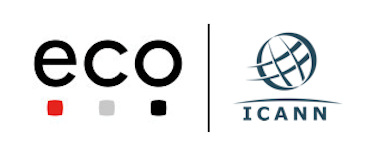The Internet is about to open up in exciting new ways. In 2026, the application period for a new wave of domain extensions, known as new gTLDs, will begin. This will create powerful opportunities for businesses, communities, and individuals to stand out online. Imagine web addresses that are shorter and more meaningful, and that instantly tell your audience who you are and what you stand for. This isn’t just a technical update; it’s an opportunity to build stronger brands, safer spaces, and more inclusive digital identities, including those in different scripts and languages. In a series of interviews, we speak with the people shaping this next chapter of the Internet so you can learn why the 2026 new gTLD program matters to you.
In this conversation, Anna Dobrovolska, CEO of DomainCrawler, shares her perspective on the upcoming new gTLD program.
Anna has a wide view of the domain market, shaped by her daily work with registries, registrars, and leading players in the industry. She closely follows trends, adoption patterns, and the dynamics that decide whether a TLD gains traction or fades away. Even though specific client names cannot be disclosed due to strict NDAs, Anna draws on her experience to give very concrete steps for applicants who want to prepare successfully for the 2026 round. Her advice is grounded on data and proven insights rather than theory, making this a valuable guide for anyone considering a new TLD.
1. What is the most critical step when preparing a new gTLD application?
Know your market. Do proper research before you invest. A gut instinct is useful for generating ideas, but decisions should be checked and validated with data. Look at real demand signals, market competition, risk, and expected ROI. Build your plan on facts and market dynamics, not assumptions.
2. How do you make the launch successful and get prepared in advance?
I do not operate a registry, but I have seen what works across many projects we support. The launches that perform best do a few things early and base them on data.
First, it’s important to check whether the idea and the target audience are real matches by looking at things like search interest, number of sites with the specific keyword live, resale activity, and in-depth analyses of everything around that audience (technologies used, historical data, etc.). If those signs are weak, they rethink or adjust.
Second, decide what the new gTLD is for (namely, the main use cases). Group the names into clear categories (standard, premium, reserved). Set who can register and what the rules are. Base these choices on real market data. Then make sure all marketing and registrar onboarding align with those use cases.
Third, pick the top 10 registrars that already reach your target audience and market. Rank them by proven demand in that segment. Line up the partnerships early. Bring simple, data-backed facts to prove the value. Give them a clear story, a sensible product set, and a realistic launch timeline.
Data shows where to start. Regular reviews show what to change. Know your market deeply, your exact niche and its details. That knowledge doesn’t just boost confidence in your investment; it gives you clear direction, sharper moves, and the ability to adjust quickly when the market shifts. The only bad plan is the one you don’t update. Keep improving it based on the signals your data gives you.
3. How does DomainCrawler help with new TLDs?
Imagine having full visibility of global domain name activity with historical records behind it. That’s what we bring. We slice this data to give clear, reliable insights on renewal rates for all TLDs, market share, and the specific activity in your niche.
Now, imagine you type in your planned TLD word. We search across the entire Internet, domain names, and relevant content to see who really targets that word. We analyze the players, show where activity spikes, and surface the top registrars who already serve those customers.
Can you see the power this gives you? Our detailed report shows exactly where to start, who to approach first, and how to move, so your decisions are precise and backed by trustworthy data.
Our New TLD Go-To-Market Strategy gives applicants a data-driven report and a clear go-to-market plan.
4. You speak with registries, registrars, and industry leaders. What is your best insight for running a successful domain business?
Even though I don’t run a registry, I read the data a lot. From that seat, a few things are consistently true.
Data turns ideas into results. Check real demand before launch and keep checking after. If interest is low, tighten the string, narrow the audience, or shift the timing. Teams that follow the signals perform better.
Choose names on purpose. Build your name lists around clear, real-world use cases. When names match how people actually plan to use them, sign-ups come faster and renewals stay strong.
Target distribution. Put your energy into the registrars who already reach your buyers. Prioritize them in the order the data supports. Focus beats broad, generic outreach every time.
Be ready to handle abuse. Use risk data to set policy and controls. Complaints go down, trust goes up, partners engage more.
My main takeaway is that data is no longer optional. It is how you focus effort, avoid costly detours, and make faster, better decisions.
Closing note
DomainCrawler works with applicants, registries, and industry stakeholders worldwide to help them prepare for the next new gTLD round with clarity and confidence. And they don’t stop at the application. Beyond specialized pre-launch reports, they keep supporting companies after launch with a data booster: clear, ongoing evidence on competitive activity, market share, renewal patterns, and where your growth is coming from. The goal isn’t just to launch; it’s to sustain performance and keep improving, so you lead your category, not just enter it. DomainCrawler works with the best teams in the industry, and eco – Association of the Internet Industry is proud to support the company’s momentum and growth.
Anna Dobrovolska, CEO of DomainCrawler, is open for conversations and welcomes contact from companies that want to launch well and stay ahead. You can reach Anna and the DomainCrawler team at:
Company website: domaincrawler.com
Anna’s personal LinkedIn: https://www.linkedin.com/in/anna-dobrovolskaya/
Company LinkedIn page: https://www.linkedin.com/company/domain-crawler/
Explore the new gTLD Provider Directory and connect with trusted providers: https://international.eco.de/topics/names-numbers/new-gtld-provider-directory/




